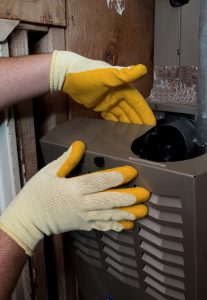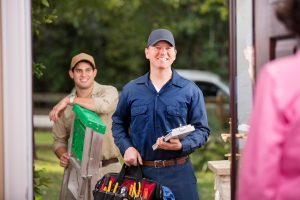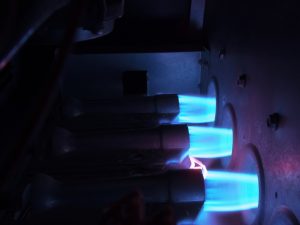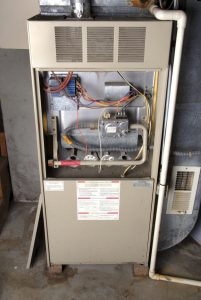 Here in Colorado, we depend on our heaters a lot. Winters are cold and snowy, and your heating system is the only thing standing between you and extreme discomfort throughout the heating season. That is why you want–or, rather, need–your heater to be there for you night and day, functioning effectively, reliably, and efficiently. Of course, even the best heating systems are operating on finite lifespans. At some point, you’ll find that you need to replace your heater.
Here in Colorado, we depend on our heaters a lot. Winters are cold and snowy, and your heating system is the only thing standing between you and extreme discomfort throughout the heating season. That is why you want–or, rather, need–your heater to be there for you night and day, functioning effectively, reliably, and efficiently. Of course, even the best heating systems are operating on finite lifespans. At some point, you’ll find that you need to replace your heater.
The key is not to make your heater last forever, but to ensure that you get the longest period of service possible from that heater–without sacrificing its performance quality. Today we’re going to discuss ways in which you can extend the life of your heater to do just that. Keep these tips in mind, and you should be able to enjoy a very fruitful relationship with your heating system for many years to come. And when you do need any heating services, including boiler, heat pump, ductless mini split, or furnace service in Fountain, CO, just give us a call!

 The
The  A heater seems like a relatively easy piece of equipment to deal with. Yes, it has confusing moving parts and usually a gas ignition system, but these are all things your installer hooked up at installation, and that you generally don’t have to worry about. All you do is turn up the thermostat and wait for the magic to happen.
A heater seems like a relatively easy piece of equipment to deal with. Yes, it has confusing moving parts and usually a gas ignition system, but these are all things your installer hooked up at installation, and that you generally don’t have to worry about. All you do is turn up the thermostat and wait for the magic to happen. Throughout its life,
Throughout its life,  When you live in the Colorado Springs area, you’ll find some of the finest local contractors in HVAC (heating, ventilation, and air conditioning) at Robbins Heating & Air Conditioning. If you’ve reached our site from anywhere else, you might have to do some digging. Not all HVAC contractors are the same, and there’s not one single factor, like price, that should influence your decision.
When you live in the Colorado Springs area, you’ll find some of the finest local contractors in HVAC (heating, ventilation, and air conditioning) at Robbins Heating & Air Conditioning. If you’ve reached our site from anywhere else, you might have to do some digging. Not all HVAC contractors are the same, and there’s not one single factor, like price, that should influence your decision. Furnaces of the past had a lot of issues in terms of home safety. Unfortunately, it was once all-too-common for a fire to break out due to a furnace malfunction, or a carbon monoxide leak to make people ill. Today, as you might expect, modern engineering has led to a much safer furnace.
Furnaces of the past had a lot of issues in terms of home safety. Unfortunately, it was once all-too-common for a fire to break out due to a furnace malfunction, or a carbon monoxide leak to make people ill. Today, as you might expect, modern engineering has led to a much safer furnace. High humidity can be a huge problem in some parts of the country and at certain times of year, when it can add to the heat of summer and really drag you down. But in the winter in Colorado, we face the opposite problem, and as you may already well know, it can be just as bad. Many people in our areas have humidifiers to ease the trouble, but few know everything they should about their installation and maintenance.
High humidity can be a huge problem in some parts of the country and at certain times of year, when it can add to the heat of summer and really drag you down. But in the winter in Colorado, we face the opposite problem, and as you may already well know, it can be just as bad. Many people in our areas have humidifiers to ease the trouble, but few know everything they should about their installation and maintenance. Think about the last time you had to repair a car at an inconvenient time. You might have been driving when a maintenance light turned on, or you may have heard an odd sound right before a big trip. Afterward, you may have realized that preventative maintenance could have saved you the trouble.
Think about the last time you had to repair a car at an inconvenient time. You might have been driving when a maintenance light turned on, or you may have heard an odd sound right before a big trip. Afterward, you may have realized that preventative maintenance could have saved you the trouble. When you live in a cooler climate, you need a home heating system that packs a punch. Whether or not you’re in the market for a brand-new heater, we want to make sure you know about all of the options that can ensure your HVAC system (heating, ventilation, and air conditioning) is ready for the chilly weather still yet to come.
When you live in a cooler climate, you need a home heating system that packs a punch. Whether or not you’re in the market for a brand-new heater, we want to make sure you know about all of the options that can ensure your HVAC system (heating, ventilation, and air conditioning) is ready for the chilly weather still yet to come.